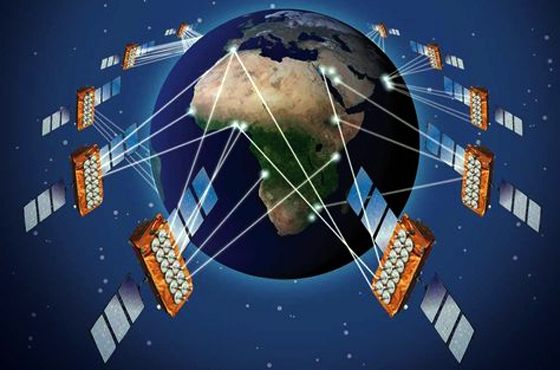DubaiSat 2, UAE’s second earth-imaging satellite, will blast off from the Yasny launch base in Russia on November 21, a key milestone for the UAE’s nascent space industry.
Built and designed by a team of 32 engineers, half of whom are Emirati, the state of the art satellite is an initiative of the Emirates Institution for Advanced Science and Technology (EIAST), in association with South Korea’s Satrec Initiative.
The advanced satellite, with a capability of capturing high resolution images, will be deployed using the Russian Dnepr rocket launcher in cooperation with the Russian International Space Company (Kozmotras).
“EAIST is committed to influencing a comprehensive scientific renaissance in the UAE and being a key player in disseminating information, building capacity, and improving research and development in the fields of outer space technology, satellite manufacturing, space imaging, ground station services, and satellite support,” said Yousuf Al Shaibani, Director General, EIAST.
DubaiSat 2 successfully completed all the key tests that are conducted prior to the launch, including the shock and the separation tests, paving the way for the major milestone.
“The successful conclusion of a series of tests on DubaiSat 2 reflects the experience and dedication of the UAE engineers working on this project. The team includes 16 Emirati engineers working in collaboration with our strategic partner from South Korea, Satrec Initiative. The main objective of launching DubaiSat 2 is to provide various stakeholders with information and images primarily for peaceful rather than commercial purposes, including disaster and crisis management, urban planning, and scientific research,” he added.
The satellite was recently transported from South Korea to Russia under the supervision of EIAST engineers in preparation for its launch after it underwent a series of tests.
DubaiSat-2 will be the first satellite in the world to have a propulsion subsystem, which allows it to change its distance from the earth and correct its path automatically in case of deviation.
The satellite will orbit 600km above the earth’s surface compared to the 690km orbit of DubaiSat-1. The orbit has also been changed from an ascending orbit (South to North) to a descending orbit (North to South), which will allow both satellites to work well in constellation as well as give better coverage of the UAE area.
This and many other features makes DubaiSat-2 much more advanced than its predecessor in more than one ways.
EIAST was established by the Dubai Government in 2006 with the goal of promoting a culture of advanced scientific research and technology innovation in Dubai and the UAE, and enhancing technology innovation and scientific skills among UAE Nationals. It is mainly involved in outer space research and development; satellite manufacturing and systems development; space imaging; and ground station services and support for other satellites.
The institution, which is currently manned by an 80 per cent Emirati workforce, is tasked to develop a full-fledged space program for the UAE.
Gulf News
13 November
























































